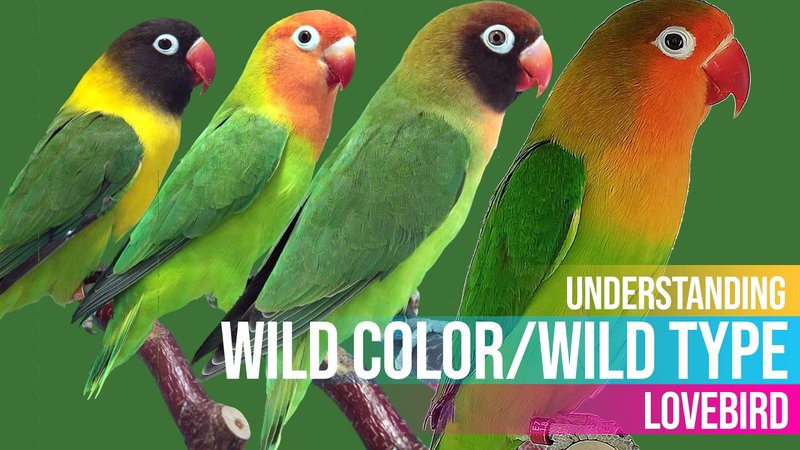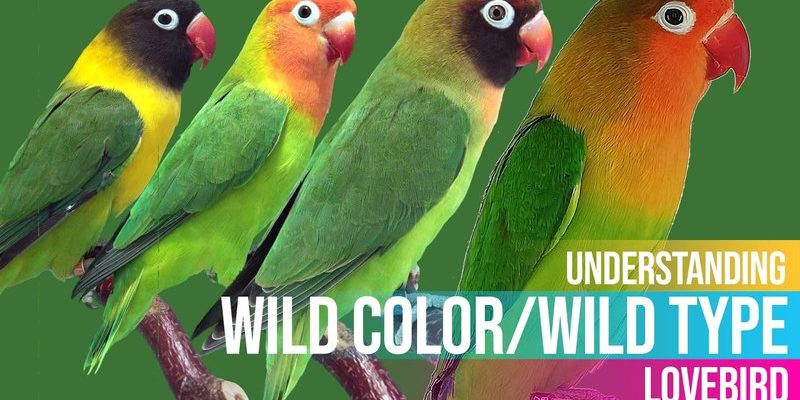
Identifying lovebirds can be as rewarding as it is challenging. These birds are often found in Africa, where they live in flocks and are most active in the early morning or late afternoon. Understanding their appearance, behaviors, and sounds will help you increase your chances of spotting them. So, grab your binoculars, and let’s dive into the world of lovebirds!
Understanding Lovebird Species
Before you head out, it’s important to know that there are several species of lovebirds, each with its own unique traits. The most common types include the Peach-faced Lovebird, the Fischer’s Lovebird, and the Masked Lovebird.
– Peach-faced Lovebird: With its vibrant peach-colored face and green body, this species is one of the most recognizable. They usually inhabit areas such as savannas and forests.
– Fischer’s Lovebird: These lovebirds are a bit smaller and have striking yellow heads and green bodies. They often live in the wild in communal roosts, which makes them easier to spot.
– Masked Lovebird: As the name suggests, this species has a distinctive black mask around its face. They’re typically found in shrublands and open forests.
When searching for lovebirds, keep in mind their habitat preferences. They commonly reside near water sources and are often seen perched in trees or foraging on the ground. The more you know about the different species, the easier it will be to identify them!
Appearance: What to Look For
So how do you spot a lovebird when you’re out in the wild? Their colors are a good starting point. Typically, lovebirds are small, about 5 to 7 inches long, and boast bright plumage. Most have a combination of green, yellow, and peach colors.
Look for:
- Size: Lovebirds are small; their size makes them less intimidating and easy to miss if they’re not in a large group.
- Colors: Their vibrant feathers stand out against the greenery. If you see a splash of bright color, chances are it’s a lovebird.
- Grouping: They often travel in pairs or small flocks, so if you spot one, keep an eye out for more!
Here’s the thing: just because you see a colorful bird doesn’t mean it’s a lovebird. Pay attention to the overall shape and posture. Lovebirds have a rounded head, short neck, and a relatively short tail which distinguishes them from other parrots.
Listening for Lovebirds
Not only can lovebirds be identified by their appearance, but also by their sounds. If you’re in the right area but can’t see them, tune in closely. Lovebirds are known for their cheerful, chattering calls. Their voices can be heard echoing through trees, especially in the early morning.
You might hear:
- Chirps: These are quick, high-pitched sounds that can signal excitement or alertness.
- Chattering: This is a more complex series of sounds that usually occurs when they’re socializing or bonding.
- Soft Murmurs: When they’re close together, lovebirds often communicate with quiet, soft sounds.
By learning to recognize these sounds, you can increase your chances of finding lovebirds, even if they’re hiding among the branches.
Behavioral Traits of Lovebirds
To really identify lovebirds, you’ll want to observe their behaviors. These birds are incredibly social creatures that often engage in playful activities. Here are a few behaviors to look out for:
– Preening: Lovebirds often groom each other, which is a sign of affection. If you notice a pair sitting closely while preening, you’ve likely stumbled upon lovebirds.
– Flocking: They thrive in groups. Spotting a small flock flying together or perched on a branch can be a sure sign.
– Playfulness: Lovebirds are naturally curious and playful. Watch for them chasing each other or playing with objects in their environment.
Understanding these traits not only helps you identify lovebirds but also enriches your wildlife watching experience. Watching their interactions can feel like getting a glimpse into their happy little world!
Where to Find Lovebirds
Now that you know how to identify lovebirds, the next step is finding them in their natural habitat. These birds are primarily found in sub-Saharan Africa, but they have also been introduced to other regions, like Florida. Here are some tips for spotting them:
– Visit their preferred habitats: Lovebirds are often found in wooded savannahs, near water sources, and in urban parks. Researching the best locations can help narrow down your search.
– Time your visit: Dawn and dusk are when lovebirds are most active. Plan your outings during these times for the best chance of spotting them.
– Be patient and observant: Wildlife watching requires patience. Sit quietly and scan your surroundings carefully. Use binoculars to enhance your chances.
Finding lovebirds can feel like a treasure hunt. The more effort you put in, the more rewarding the experience will be!
The Importance of Conservation
As you learn to identify lovebirds, it’s essential to consider their conservation status. Many lovebird species are facing habitat loss and other challenges in the wild. Understanding their importance in the ecosystem is key.
– Biodiversity: Lovebirds contribute to the diversity of their ecosystems. They help in seed dispersal and maintaining healthy plant life.
– Human Connection: By observing these beautiful creatures, people form a deeper appreciation for wildlife and conservation efforts.
It’s important to respect their habitats and avoid disturbing them. If you want to help, consider supporting local conservation groups that work to protect lovebirds and their environments.
Tips for Birdwatching and Photography
If you plan to document your lovebird spotting experience, whether through writing or photography, here are a few tips:
– Use the right equipment: A good pair of binoculars can make a huge difference. For photography, a zoom lens will help capture those close-up moments without disturbing the birds.
– Stay quiet and still: Birds are easily spooked. Avoid sudden movements or loud noises that could scare them away.
– Take notes: Jot down your observations to capture the experience. This will not only help you remember the details but can be fun to look back on later.
Letting your curiosity guide you will make the process enjoyable and fulfilling. Plus, the thrill of spotting a lovebird in the wild is truly a special experience!
As you’re out exploring, take your time and enjoy the moment. Identifying a lovebird in the wild can be both exciting and a bit challenging, but with the right approach, you’ll increase your chances. Enjoy the beauty of nature, and don’t forget to take a moment to appreciate these colorful little creatures!

